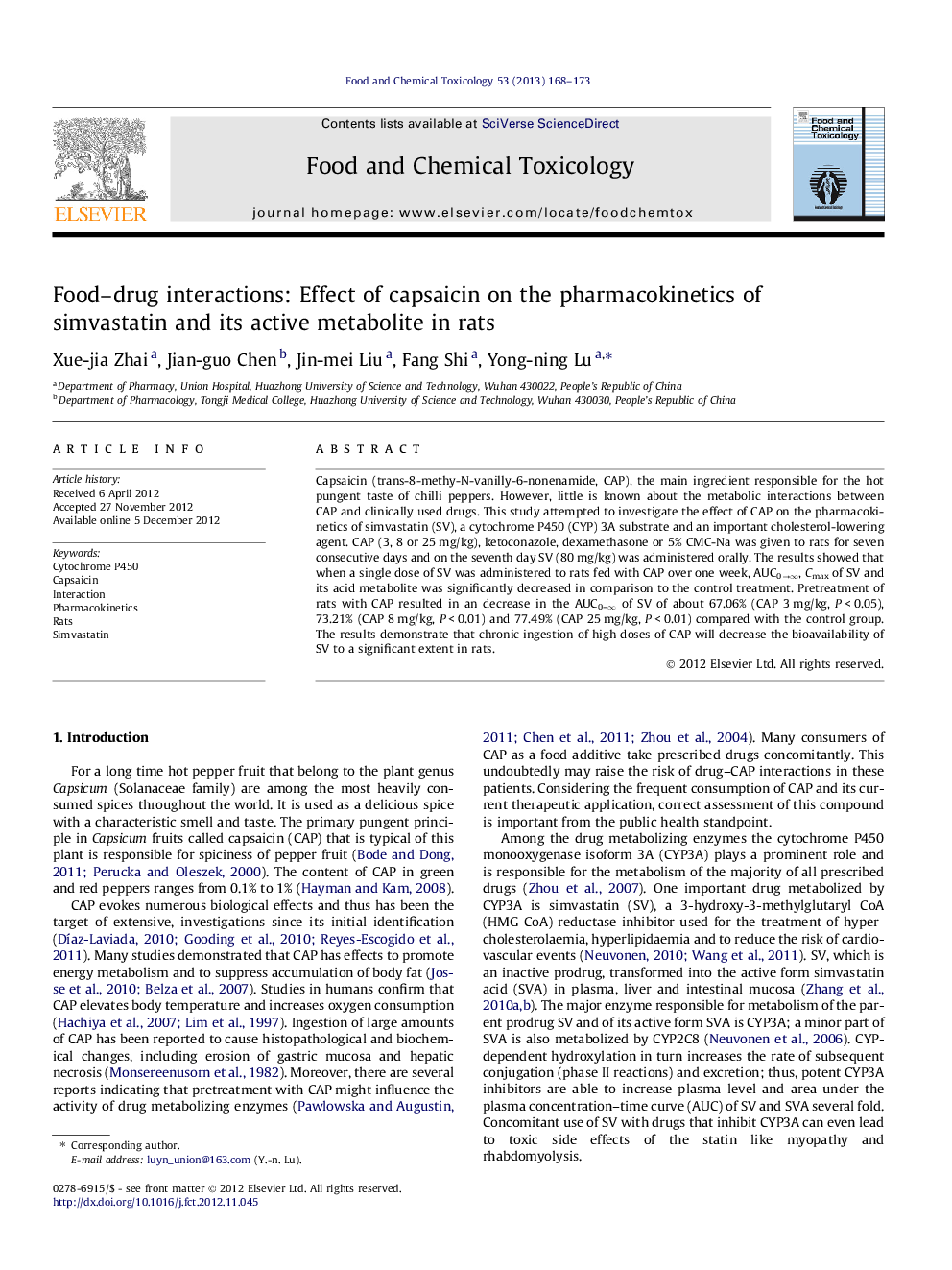| Article ID | Journal | Published Year | Pages | File Type |
|---|---|---|---|---|
| 5851340 | Food and Chemical Toxicology | 2013 | 6 Pages |
Capsaicin (trans-8-methy-N-vanilly-6-nonenamide, CAP), the main ingredient responsible for the hot pungent taste of chilli peppers. However, little is known about the metabolic interactions between CAP and clinically used drugs. This study attempted to investigate the effect of CAP on the pharmacokinetics of simvastatin (SV), a cytochrome P450 (CYP) 3A substrate and an important cholesterol-lowering agent. CAP (3, 8 or 25Â mg/kg), ketoconazole, dexamethasone or 5% CMC-Na was given to rats for seven consecutive days and on the seventh day SV (80Â mg/kg) was administered orally. The results showed that when a single dose of SV was administered to rats fed with CAP over one week, AUC0ââ, Cmax of SV and its acid metabolite was significantly decreased in comparison to the control treatment. Pretreatment of rats with CAP resulted in an decrease in the AUC0-â of SV of about 67.06% (CAP 3Â mg/kg, PÂ <Â 0.05), 73.21% (CAP 8Â mg/kg, PÂ <Â 0.01) and 77.49% (CAP 25Â mg/kg, PÂ <Â 0.01) compared with the control group. The results demonstrate that chronic ingestion of high doses of CAP will decrease the bioavailability of SV to a significant extent in rats.
⺠The effect of capsaicin on the pharmacokinetics of simvastatin was investigated. ⺠The pharmacokinetics of simvastatin and its acid metabolite were both investigated. ⺠The rats were pretreatment with ketoconazole or dexamethasone for comparison. ⺠Different doses of capsaicin on the pharmacokinetics of simvastatin were investigated. ⺠A LC/MS system was used for the sample analysis and detection.
